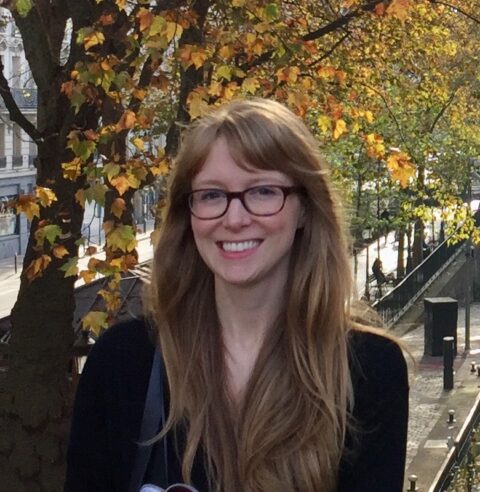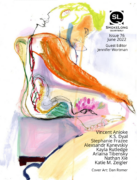I love the beautiful intertwining of facts and emotion in this story, how they form a perfect whole, as if they’re meant to belong together. How did you go about finding the exact information to couple with your very human story and how did you know which facts fit just right, like the pieces of a puzzle? Did the facts come first or did the story?
I came across these facts randomly over a long period of time, just in the course of reading science news and whatnot on the Internet. Initially, they each stuck me as a fact that would take hold of a lover’s mind (or a mourner’s) and evoke some introspection. When you’re in love, you can make anything about love, even prehistoric men fishing. I think the same is true for grief. Everything reminds you of that person.
The three facts in your story are delivered by a little boy whose enthusiasm for information is both adorable and authentic. Why did you choose him to be the conveyor of your facts?
Honestly, it seemed like an easy but realistic circumstance in which the narrator would learn these unrelated bits of information in quick succession. And I have young nieces and nephews who are enthusiastic about facts, and I learn a lot from them! I also liked the duality of obsession that came out in the story—the kid obsessed with facts, and the narrator just as obsessed with his love and loss, so these two characters end up orbiting around each other in their conversations, each on their own plane.
The story is divided into three distinct sections, each one building momentum, until the wrenching heartbreak that unfurls in the last section. How did you come to choose this sectional format for your piece?
I love flash that’s broken up into sections—it’s my favorite to write and read. Flash is already often about small moments, and when it’s divided into even smaller moments, they can build like a puzzle for the reader to put together, to find meaning in the overall picture. But for this story, I actually wrote the sections mostly separately, only combining them into a single story after they’d sat in my works-in-progress folder for a bit. I wrote the crow-funeral section first, when I came across that fact somewhere. I was intrigued by the idea of crow funerals and watched several on YouTube. My mother had passed away recently, so my initial draft of that section used a mother-daughter lens, and I intended it as a stand-alone micro. When I wrote a version of the pruny-hands section later, I thought that too was a separate micro, one about lovers, not grief. Later still, it occurred to me to combine them into a longer piece with more movement and depth, so I drafted the middle section, made the lens consistent, and added the nephew to link them all.
“Three Facts About You” reads like a love letter; it’s such a personal, intimate story. Did it arrive in the first person? Would the story read the same if you’d written it in third person?
I was aiming for a love-letter feel, so I’m glad that translated. It did arrive with the perspectives as they are in the final. I played around with other perspectives, but in the end I wanted the epistolary sense of the narrator directly addressing their lost person. I find that combination of first-person narrator/second-person addressee very engaging in flash and poetry, intimate and sometimes almost confrontational.
Congratulations on your selection as runner up in the 2022 Bath Novella in Flash contest. Can you tell us a little bit about your novella and how it came to be?
Thank you! My novella, It Felt Like Everything, follows three teenage girls growing up in Buffalo, New York. It’s part coming-of-age story, part love letter to my hometown. It’s a novella-in-flash, so each chapter is a stand-alone piece of flash fiction under a thousand words. I really enjoy that form, because the plot sort of materializes out of discrete moments over time, like data points on a graph, with plenty of negative space for the reader to do their own imagining. I’m grateful to Bath Flash Fiction and its associated press, Ad Hoc Fiction, for promoting the form and for publishing my tiny book.



 The core workshop of SmokeLong Fitness is all in writing, so you can take part from anywhere at anytime. We are excited about creating a supportive, consistent and structured environment for flash writers to work on their craft in a community. We are thrilled and proud to say that our workshop participants have won, placed, or been listed in every major flash competition. Community works.
The core workshop of SmokeLong Fitness is all in writing, so you can take part from anywhere at anytime. We are excited about creating a supportive, consistent and structured environment for flash writers to work on their craft in a community. We are thrilled and proud to say that our workshop participants have won, placed, or been listed in every major flash competition. Community works.